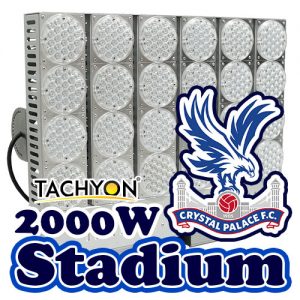LED Efficiency Overview
Due to their various advantages, LEDs have become an important part of semiconductor light sources for general lighting applications. For some time, LED efficiency has been significantly higher than conventional lighting technologies. But how to define the efficiency of a solid state lighting (SSL) system? In common everyday language, when we talk about the efficiency of light sources, we usually refer to their luminous efficiency, measured in lumens per watt (lm/W). Another measure is radiated power, which needs to consider the effects of potency and efficiency. A decision-making process that product developers must follow as this affects the efficiency of the overall system.
Calculating functional metrics includes determining the luminous flux of the light source (lm) versus the electrical input power (W). In contrast, the corresponding amount of photometric radiation does not take into account the sensitivity of the human eye, but is a pure measure of efficiency. The electrical input power (W) is divided by the optical radiation output power (W) to give the percent efficiency. The efficiency of LEDs depends on many different factors. We’ll cover some of them in detail in this article.
Color Temperature Affects LED Efficiency
The choice of color temperature has an important impact on lighting efficiency. Can be used as a means of efficiently planning lighting solutions within the framework of existing lighting regulations. LEDs with a high color temperature (eg 5000K) are generally more efficient than those with a lower color temperature (eg 3000K). The graph in Figure 1 shows the spectrum (or spectral power distribution – SPD) for different CCT values for LEDs with a color rendering index (CRI) Ra > 80. The SPD curve is based on the human sensitivity curve Vλ.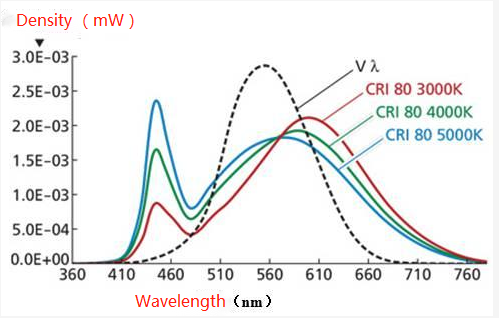
Fig.1 Spectral power distribution of 80-CRI LED at different CCT values
In order for LEDs to produce white light, LED chips that emit blue light are usually used. Some of the light from these lamps is converted to longer wavelengths (green, yellow, and red light) by converters or phosphors, adding all these colors together and creating white light. However, there will be losses in the conversion process, and the longer the wavelength of the converted light increases, the greater the loss. The reason is that the difference in energy between light at higher energy levels (blue light) and light at lower energy levels (red light) is converted into heat.
Minimizing losses requires precise calculations of the converter’s absorption and emission wavelengths. However, a simplified case is sufficient to explain the basic principles. For example, for a warm color temperature of 3000K, a lot of red light needs to be converted.
However, this requirement leads to larger losses, reducing the luminous efficiency compared to 4000K. For a high color temperature of 5000K, blue light only needs to be converted to green light, not red light. That’s why the luminous efficiency is increased over 4000K.
The efficacy comparison is shown in Figure 2.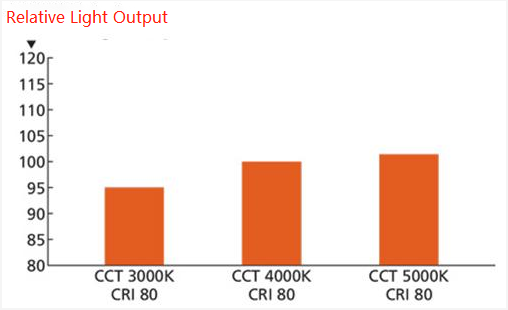
The Effect of Color Rendering on LED Efficiency
As mentioned above, the composition of the color spectrum has a decisive influence on the efficiency of the LED after selecting a suitable converter for conversion. The converter combinations are developed for different CRIs and are optimized for CRI as well as efficiency.
The difference between CRI 70, 80, and 90 can be seen very clearly when the red shades are displayed. To reproduce these shades as faithfully as possible, a high percentage of long wavelength light is required. In other words, light at the red end of the spectrum.
Figure 3 shows the SPD of a 4000K LED at different CRI values. The high proportion of red on the CRI 90 version can be clearly seen. As mentioned above, producing such a high ratio involves high losses. Furthermore, most of the red energy generated is clearly beyond the sensitivity curve of the human eye Vλ, which leads to a further decrease in luminous efficiency. The influence of different color temperature on the LED luminous efficiency is within the range of ±5%. The effects of CRI at different values were generally in the range of ±15% (Fig. 4).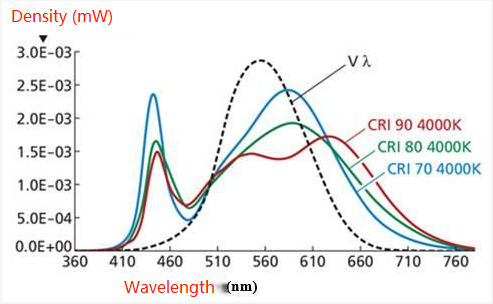
Figure 3: SPD of 4000K-CCT LED at different CRI values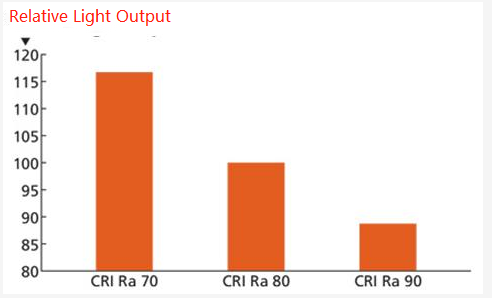
Figure 4: Relative luminous efficiency of different color rendering values at 4000K
LED Efficiency Adjustable
Compared to conventional light sources, LED opto-semiconductors offer additional dimensions. Luminaire manufacturers can adjust and set the efficiency or luminous efficacy, i.e. current density, on an application-specific basis.
LEDs are usually grouped according to the brightness and color of a certain operating current. For a particular grouping condition, the current density can therefore be adjusted to suit the application and the desired level of luminous efficacy.
For example, if an LED with a luminous efficacy of 130 lm/W is used at the specified grouping current, the operating current can be reduced to 40%, which will eventually increase the luminous efficiency by 20% to 156lm/W. If the operating current is increased to 140%, the luminous Efficiency will drop by 10% to 117 lm/W.
Table 1 summarizes the case of variable current density.
Table 1 Changes in current density have corresponding efficacy effects
| Operating conditions 1 | grouping condition | Operating conditions2 | |
| Current density (A/mm2) | 40% | 100% | 140% |
| Lm/W | 120% | 100% | 90% |
| lm | 43% | 100% | 130% |
Table 2 Based on the theory of two different LEDs, product developers face trade-offs when designing LED systems
| System A consisting of LED 1 | System B consisting of LED 2 | System C consisting of LED 2 | System D consisting of LED 2 | |
| Current density (A/mm2) | 100% | 100% | 136% | 136% |
| Lm/W | 100% | 110% | 100% | 100% |
| lm | 100% | 110% | 142% | 100% |
| LED Quantity | 100% | 100% | 100% | 70% |
The efficiency curve also depends on other parameters, such as the operating temperature or the maximum operating conditions that need to be met. At these two points, the absolute luminous flux of the LED will naturally vary. We’ll take a closer look at this effect in the next section.
Using More Efficient LEDs to Reduce System Cost
Over the course of development, LEDs have become brighter and therefore more efficient. However, some applications do not necessarily require higher efficiency. So why is there so much demand for brighter LEDs? One reason, no doubt, is that more efficient LEDs can significantly reduce costs at the solid-state lighting system level.
Let’s look at an example. For the following comparisons, assume you want to create a product with 100% efficiency and luminous flux. Here you can choose one of two LEDs: LED 1 at 100% brightness, and the more efficient LED 2 at 110% brightness. Figures 5 and 6 graphically depict two LEDs under system-level operating conditions.
Use System A with LED 1 as a reference. When the normal operating current is 100%, the relative efficiency of the system is 100%, and the relative luminous flux value is 100%. The relative number of LEDs required by the system is also 100%.
If LED 2 is used, system B in Figure 5 can be implemented. In this system, the LEDs are operated at the same current, and the same number of LEDs are used. Thus, System B is 10% more efficient and brighter. Brighter can be a selling point for the luminaire, or it can provide options for the luminaire manufacturer to change operating parameters.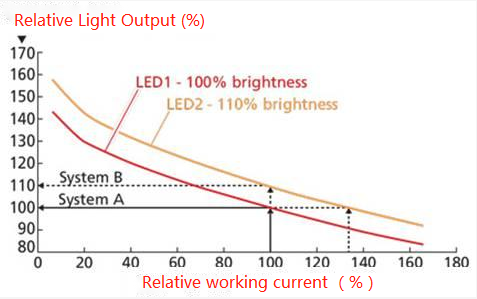
Figure 5: This graph depicts changes in luminous efficiency as operating current changes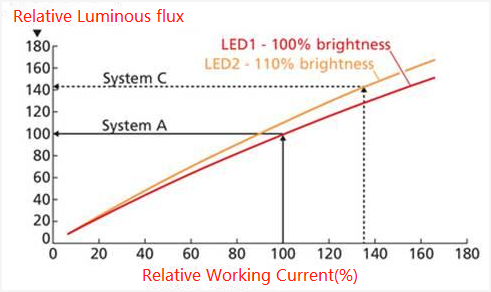
Figure 6: This graph shows luminous flux versus operating current
How to Improve the Efficiency of LED System
If there is no need to improve efficiency at the system level, perhaps it is because the system has reached the threshold of the energy efficiency class. The efficiency can then be reduced from 110% to 100% by increasing the current density. This means that the new System C will be brighter than the original 10%. Brightness levels are 42% higher than System A due to the same efficiency as System A.
However, if the application may not require greater luminous flux output, Table 2 summarizes this scenario and proposes a System D option. Because System C is much brighter than System A, there is an option to reduce the number of LEDs. System D uses 70% of the number of LEDs in System A, which significantly reduces the cost of the system.
This example can be applied very easily in a system with a large number of LEDs. If the luminous flux package can be reduced and packaged LEDs with smaller chips can be used, it can also be used for single LED systems. The level of savings in each case depends on various other parameters and may vary depending on the operating point.
The examples presented here show that color temperature as well as CRI have a significant effect on the luminous efficiency of LEDs. Specifically, the higher the color temperature, the higher the luminous efficiency. The higher the CRI, the lower the luminous efficiency. In this regard, the key difference between LEDs and conventional light sources is that the efficiency of LEDs can be adjusted by operating current. Due to the significant cost savings of LEDs, this should be taken into consideration when selecting an LED system.


